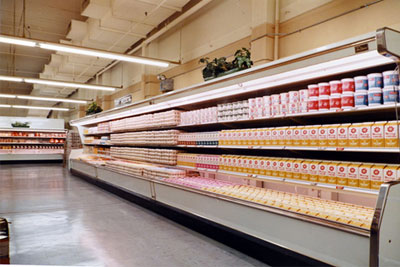LED Lights Found to Damage Milk
Scientists at Cornell University recently discovered that shining LED lights on milk for a couple of hours can diminish the liquid’s perceived quality more than microbes can. They ran experiments testing age, fat, microbiological content and light exposure on milk samples, using a range of analyses. LEDs lowered the perceived quality of the milk more than samples that had microbiological contamination greater than 20,000 CFU/mL. Milk drinkers opted for fluid stored longer over liquid kept in a normal container near LEDs for as little as four hours. Milk that had not been exposed to LED lights maintained a high quality for up to two weeks.
Milk possesses a number of photosensitive chemicals, like riboflavin and chlorophyll. When exposed to either natural or artificial light, the photonic energy these carry gets moved into the actual milk, which jumpstarts a chain reaction that creates new compounds and molecules. These, in turn, can cause the odor and taste of milk to change for the worse. Drinkers sometimes describe the taste to be like that of “plastic” or “cardboard.”
A supervisor at Cornell said that although many people view freshness in terms of age, the study proves that light is a bigger factor. LEDs may also lessen milk’s nutritional benefits and cause its appearance to change. As the milk packaging process used now exposes the product to varying light levels, this could lead to packaging improvements in the future, like altering milk jugs to make them light resistant. As older research has focused on fluorescent light, this discovery also opens new doors for experimentation with different lights in the future.
Konica Minolta Sensing has an extensive catalogue of light measuring products, like the CL-500A Illuminance Spectrophotometer and the CL-70F CRI Illuminance Meter. These versatile devices can measure all types of light, whether it is LED or fluorescent.











